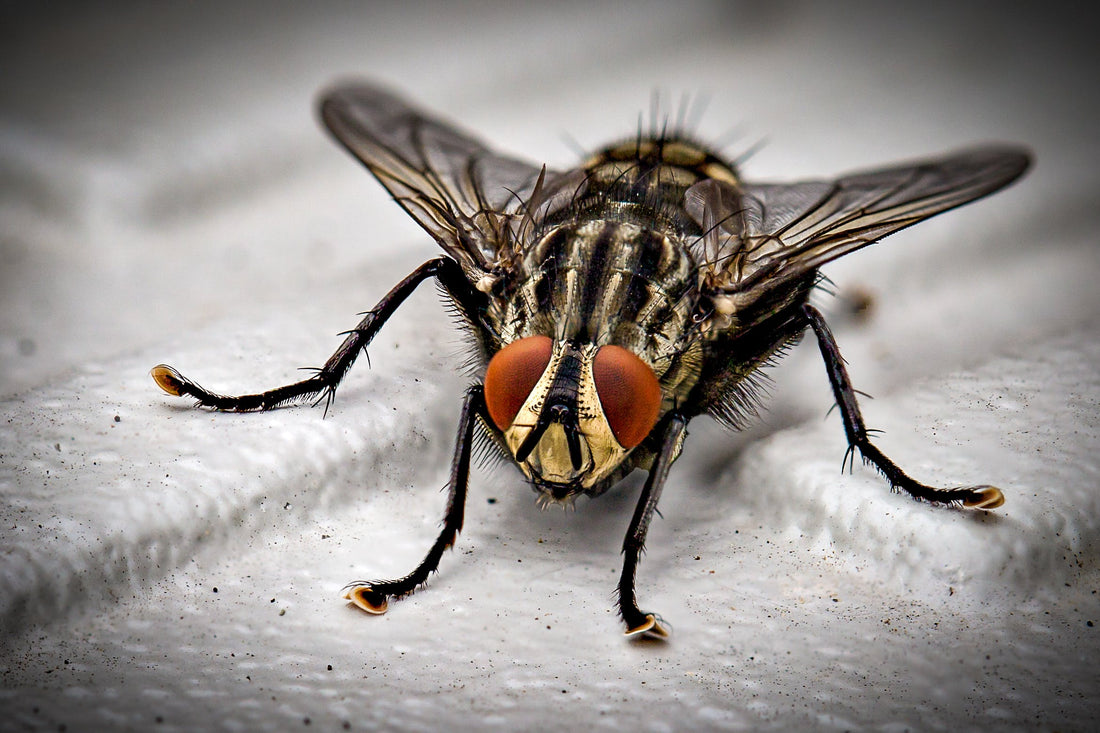Flies and maggots are rare in the HOTBIN but can prove irritating little critters once in situ. Their presence can indicate that your HOTBIN is probably not up to hot composting temperatures (40-60°C).
What Types of Flies Are Associated with Compost Bins?
House flies and fruit flies are the two main species of flies found in and around compost bins. Both thrive in a warm environment with access to plenty of fermenting and decaying material to eat and lay their eggs in.
Prevent Flies and Maggots with a HOT HOTBIN
- The basics of fly and maggot prevention in the HOTBIN is down to two key items: HOTBIN is a sealed unit - they will rarely enter via the open lid if you are present
- Keep HOTBIN hot - if flies have laid eggs on waste before it was added (ie in a food caddy) as soon as the HOTBIN is above 40°c they will die and not hatch.
There are a number of preventative steps you can take to minimise the chances of finding flies in your HOTBIN:
In the home you can:
- Keep food waste caddies closed
- Keep over ripe fruit in the fridge away from fruit flies
In your HOTBIN you can:
- Keep HOTBIN hot by operating between 40-60°c
- Keep the HOTBIN hatch and lid tightly closed
- Wipe the outside of your HOTBIN to remove any residual odours/material
If you have flies, it is an indicator that you are not HOT composting yet. Now here’s the tricky bit – when you start the HOTBIN it’s cold, it warms up to 20-30C. At 30C this is the perfect breeding temperature for flies. If your HOTBIN ‘sticks’ at this temperature and your waste had eggs laid in it before adding into the HOTBIN - you will get a fly problem.
How Can the Flies and Maggots Get into a Sealed HOTBIN?
When given the opportunity, flies will lay their eggs in any moist and warm decaying matter. They especially love kitchen food caddies or waste jugs when the lid is partially or fully open. Once living amongst the food waste, female flies lay batches of between 120-150 eggs which will hatch within 72 hours.
A note to the wise: contrary to some recommendations, the HOTBIN Team do not advise wrapping fruit and vegetable waste in newspaper before adding it to the HOTBIN. The newspaper will likely be visible in the final compost due to its high lignin content, will likely delay the onset of decomposition to the wrapped waste and may also block airflow around the HOTBIN, causing your bin to turn anaerobic.
Why Does the Number of Flies in My HOTBIN Seem to be Increasing?
At the time of adding food waste into your HOTBIN, the eggs may not yet have hatched and so are not visible to the naked eye. If your HOTBIN is operating at temperatures of 20-25°C (i.e. it’s not quite reaching hot composting temperatures) the HOTBIN is creating the ambient environment for the eggs to hatch and for the larvae to mature into adults and consequently, their population will grow.
Why Have I Got Flies Hovering Around the Valve and Hatch Panel?
Occasionally, you may find a number of flies hovering around the valve and/or the hatch panel, and unfortunately, there is not much that can be done to prevent this. They are attracted to the residual odour of waste but will move quite quickly away from the HOTBIN when they cannot find a food source or a place to lay their eggs.
How to Get Rid of Flies and Maggots Inside the HOTBIN
Get the HOTBIN HOT and the next time you add waste, there will be no flies inside the HOTBIN. If you are struggling to reach temperature, consider the following fast but very quick and effective cheats to get your HOTBIN to 60°c:
- Adding a box of grass mowings along with paper/card, woodchip and mix into the waste already in the HOTBIN
- If you don’t have any grass, add 2-3 cups of either chicken pellets or chicken poo
- Check excess water is not seeping from aeration/mesh in base - if it is, add half a bucket of cardboard pieces and half a bucket of wood chip (from black bag)
The HOTBIN should now heat up and all flies will be composted in about 2 days time.

